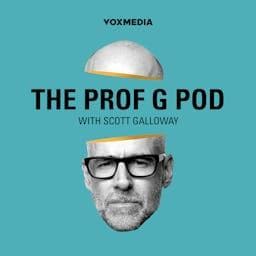Whether you're self-employed or you own a small business, there are many nuances to how you can pay yourself from your business. Our episode today hones in on how we pay ourselves personally from a corporation (along with other key employees, including spouses) and the many intricacies you need to understand when making decisions about this process. While today's episode may be our most complex and ambitious one to date, we hope it will serve as a useful resource for helping you get the most out of your business. Tuning in, you'll learn about the benefits and drawbacks of paying yourself with a salary versus dividends, how to optimize your meetings with accountants and financial planners, and much more. We get into key topics such as employee insurance (EI) in different contexts, the benefits of the Canada Pension Plan (CPP), why you need to put together an income smoothing plan, and how to use shareholder loans without consequential missteps. The final portion of our show is dedicated to income splitting, the best ways to go about it, and how to make sure you adhere to Canadian Revenue Agency (CRA) requirements. Today's episode covers a lot of ground and serves as a useful reference for listeners to return to. Join us today for this expansive conversation and arm yourself with the knowledge you need to get the most out of your corporation!
Key Points From This Episode:
(0:02:42) Important disclaimers and exceptions concerning today's topics.
(0:05:37) Common questions on taxation of active business income, personal income, the nuances of tax integration, business expenses, exemptions, and deductibles.
(0:19:32) A breakdown of how net active income is taxed, what to do with retained earnings, and navigating the dividend gross-up system.
(0:28:57) Planning for retirement, asset allocation, and determining your time horizon.
(0:34:44) An overview of General Rate Income Pool (GRIP) as a notional account for tax tracking purposes and an example of how GRIP works with active income.
(0:38:03) Looking at tax rates and tax integration as you move through different tax brackets and how rules vary between various jurisdictions in Canada.
(0:56:02) Unpacking what you need to know when it comes to paying yourself a salary and paying employees (including spouses).
(01:01:08) Employee Insurance (EI) in different contexts, the distinctions between arm's length and non-arm's length employees, and navigating Canada Pension Plan (CPP) payments.
(01:05:18) The many benefits of the Canada Pension Plan (CPP), and why the reservations people have due to it being government-mandated is not unhelpful in this instance.
(01:08:20) Key insights on the Canada employment tax credit when considering the salary versus dividend debate, and how salaries can create other financial planning benefits.
(01:16:38) Putting together an income smoothing plan, how to keep yourself in a lower tax bracket over your lifetime, and how to work with a financial planner.
(01:25:17) A Breakdown of shareholder loans, how they work, the tax risks involved, and the best ways to use them.
(01:27:32) Other ways to get money out of your corporation efficiently, like with your capital dividend account (CDA), and optimal ways to use your CDA.
(01:34:25) The concept of income splitting, its benefits, the best strategies for going about this, and how to adhere to Canadian Revenue Agency (CRA) requirements.
(01:45:17) A recap of what we covered today and what we have coming up next time.
Links From Today's Episode:
CRA Interpret Bulletins - https://www.canada.ca/en/revenue-agency/services/forms-publications/current-income-tax-interpretation-bulletins.html
Dr. Mark Soth's Calculators — https://www.looniedoctor.ca/canadian-financial-calculators/
Dr. Mark Soth (The Loonie Doctor) — https://www.looniedoctor.ca/
Dr. Mark on X — https://twitter.com/LoonieDoctor
Benjamin Felix — https://www.pwlcapital.com/author/benjamin-felix/
Benjamin on X — https://twitter.com/benjaminwfelix
Benjamin on LinkedIn — https://www.linkedin.com/in/benjaminwfelix/




































